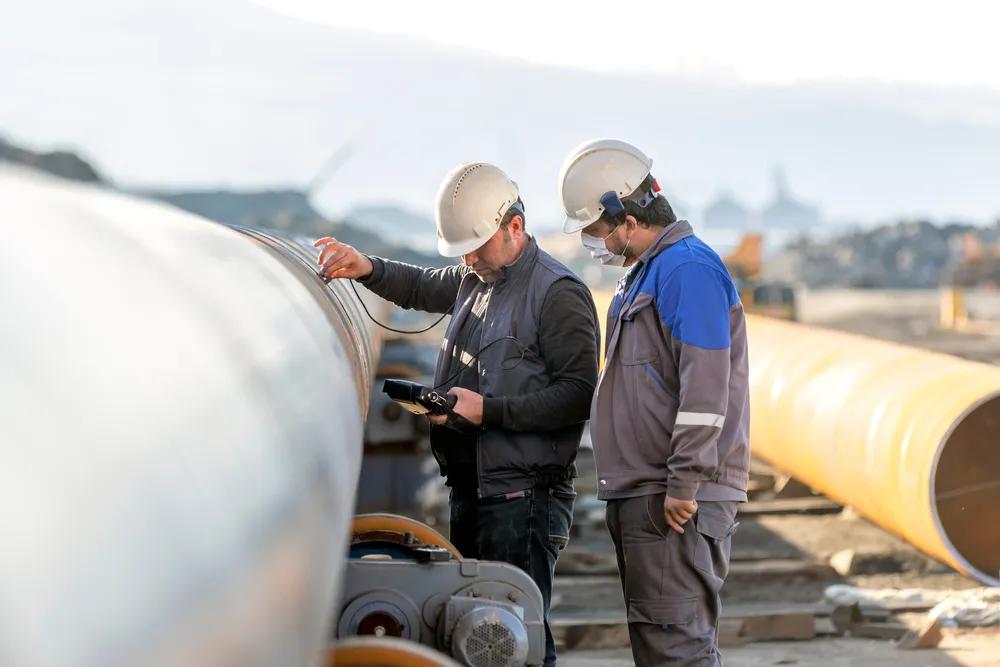Information Requirements for CAESAR II Piping Stress Analysis Course
Introduction:
The Information Requirements for CAESAR II Piping Stress Analysis course aims to equip participants with a sound knowledge of pipe fitting and piping engineering factors, in addition to extensive exposure to modeling and analyzing pipeline and pipe stresses utilizing the CAESAR II software. This course satisfies the content requirements for pipe stress calculations given in API, ASME B31.3, B31.1, B31.8, B31.4, and CSA Z662, ensuring the mechanical strength and functionality of the piping systems.
Objectives:
After completing leveled training of the Information Requirements for CAESAR II Piping Stress Analysis course, participants will:
- Improve their awareness and understanding of the mechanical integrity and safety of process equipment and piping systems.
- Obtain and apply effective methods and tools for performing basic design computations for pressure vessels and piping components in accordance with relevant codes and standards.
- Understand the different degradation modes of process equipment and piping during their service life.
- Demonstrate the ability to perform damage and failure analyses to prevent recurrence.
- Increase their capacity in managing risk from hazardous situations, including risk evaluation, control, and management.
Training Methodology:
- Lectures through effective participation
- Real-world scenarios
- Software tutorials
- Team activities and discussions
- Open interactive discussions
- Engagement in simulations
Course Outline:
Unit 1: Essential Knowledge on Pipe Materials:
- Analysis of the external and internal diameter of a pipe or the thickness of the pipe wall.
- The type or grade of a pipe.
- The fitting wall thickness or class.
- Identify the kind of valve, pressure ratings, and weights.
- Identify different categories of valves and operators and their weights.
- Relief valve relieving capacities and dimensional data.
- The thickness and density of the insulation.
- The final point (the nozzles) expansion joints and permissible loads.
Unit 2: Important Details that Deal with Pipe Support:
- Location and types of supports.
- Spring-type support load capacities.
- Spring-type support load modifications.
- Separation of sub-component bills of materials.
Unit 3: Basic Parameters Characteristics of Fluids:
- Design temperature.
- Design pressure.
- Operating temperature.
- Operating pressure.
Unit 4: Key As-Exists Conditions:
- Pipe hanger hot and cold walk-down data, such as actual spring settings, hanger condition, and interferences.
- Pipe system hot and cold walk-down data, including insulation damage, interferences, pipe distortion, and movements.
Unit 5: Tutorial on CAESAR II Pipe Stress Analysis Software and Relief Valve Discharge Characterization Analysis:
- Relief valve relieving capacities and dimensional data.
- Specific graphics on pipe snubbers and their details.
Unit 6: Analysis of Turbine Trip Scenarios:
- Effective closure opening time of stop and/or intercept valves.
- Payload and slant of stop and/or intercept valves.
- Heat balance information regarding heat exchange and pipeline flow rates based on pipeline dimensions (lb./hr.).
Unit 7: Advanced Topics in Transient Load Analyses:
- Emphasize the need for piping segment information from boiler and turbine manufacturers to engage fully in detailed transient load analyses.


















